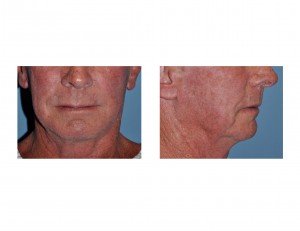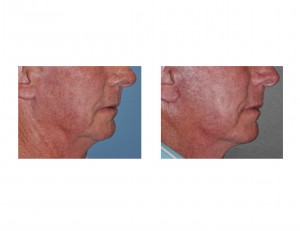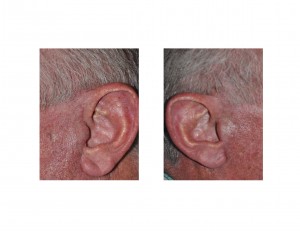Background:Aging of the face and neck is not gender selective, men have it happen just like women. But there is a clear difference in the numbers of facelifts done in men vs. women with far fewer being done in men. There are numerous reasons for the relative low incidence of facelifts in men including better tolerance and acceptance as they age and concerns about the recovery and if their appearance and scars will be noticeable after surgery.
While the basic concepts of a facelift in a man do not differ from that of a woman, there are numerous important technical differences that do affect the result and patient satisftaction. First, most men do not want a dramatic change in their appearance.In essence, they do not a windswept jawline look and a result that appears overdone. Such a change can ‘feminize’ a man’s lower facial appearance. Fortunately this is actually difficult to achieve because of the thickness and heaviness of male tissues. They simply do not move as much and are more prone to some rebound relaxation.
Secondly, and of equal importance, is the management of the incisions and closure around the ears. The telltale signs of having had a facelift are mostly about the lack of visible disturbance of the hairline around the ears. In men a primary focus and management decision is whether to place the incision in front of or behind the tragus of the ear. As there is a natural non-hair bearing area between the ear and the beard skin, one approach preserves it (incision in front of the ear) while the other (incision behind the tragus) has the potential to move beard skin onto the ear. For this reason, the traditional approach has been to keep the incision in front of the ear for men.



This type of facelift is really more of a mini- or limited type. It is exactly what he needed given his more limited neck and jowl sagging. While an incision could have been used in front of the ear, the amount of skin movement made it possible to use a retrotragal approach without significant beard skin displacement. The amount of change was also not as dramatic and achieved his natural after surgery look.
Case Highlights:
· Facelifting in men is different because of their beard skin considerations around the ear and their concern about postoperative recovery and perception.
· Management of the beard skin around the ear in male facelifts is critical and it is always best to preserve a non-hairbearing area between the ear and the beard skin, even if the amount of neck and jowl tightening is less.
· Because of their beard skin, men are more prone to hematoma complications after facelift surgery.
Dr. Barry Eppley
Indianapolis, Indiana


